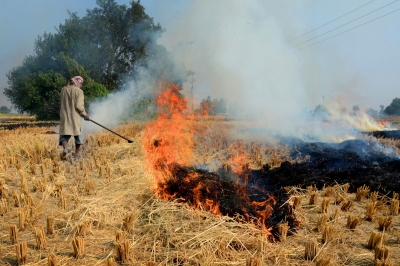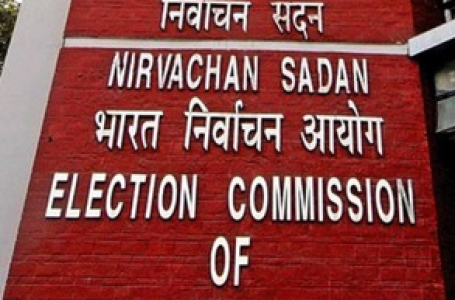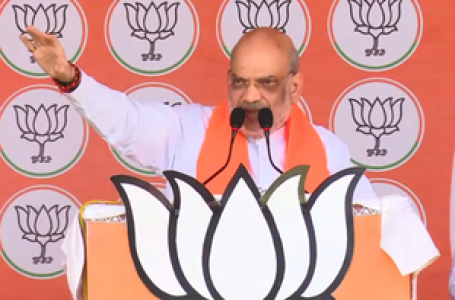
Chandigarh, Oct 8 (IANS) Just days ahead of the national capital getting shrouded in a thick blanket of smog, farmers of Punjab and Haryana, aptly called India’s prominent granaries, have started setting their fields on fire to quickly clear off the crop residue of paddy so that the field is ready for the next crop, mainly wheat.
Both states have two growing seasons: one from May to September and another from November to April. Many farmers rotate between crops, planting rice in May and wheat in November.
Punjab annually generates 20 million tonnes of paddy straw and this is normally set on fire to quickly clear the fields for the next crop, resulting in choking of the National Capital Region (NCR) in October and November.
As per the state agriculture department, the estimated waste generation from paddy harvesting in Haryana is around 3.5 million tonnes, with the crop mainly produced in Karnal, Kaithal, Kurukshetra, Ambala, Fatehabad, Sirsa, Yamunanagar and Panipat districts.
Punjab recorded 71,304 paddy fire incidents in 2021, 76,590 in 2020, 55,210 in 2019 and 50,590 in 2018, with many districts including Sangrur, Mansa, Bathinda and Amritsar, witnessing a large number of such incidents.
Comparatively much lower than Punjab, Haryana reported 6,987 fire incidents during the paddy harvest season in 2021 and 9,898 in 2020.
Sounding a warning note, a Punjab Pollution Control Board (PPCB) official told IANS that the farm fire incidents is expected to reach its peak close to Diwali on October 24.
With numerous farm fires across Punjab and red outlines on satellite images showing the approximate locations of active burning, the Centre has warned the state government to chalk out a comprehensive action plan at the micro level for effective control of paddy stubble burning.
During the Assembly elections in Punjab this year, the Arvind Kejriwal-led AAP party had promised to address the stubble burning issue. The national capital, also under the helm of the AAP government, gets shrouded in a thick blanket of smog particularly in October and November as the stubble fire picks up in the adjoining states of Punjab, Haryana and Uttar Pradesh.
Joining the blame game, Amit Malviya, in-charge of BJP’s National Information and Technology Department, said earlier Kejriwal would blame stubble burning in Punjab for pollution in Delhi.
“Now that the AAP is in power in Punjab, stubble burning has started again and it will choke Delhi and the rest of North India in no time,” Malviya tweeted. “What is Kejriwal doing to ensure that Delhi breathes clean?”
Last month, the AAP governments in Punjab and Delhi joined hands to combat stubble burning by spraying Pusa bio-decomposer on 5,000 acres in Punjab as a pilot project.
Agricultural experts say promoting crop diversification and shifting to a short duration paddy crop in Punjab can help reduce the stubble burning problem.
An estimated 39 million tonnes of paddy straw are being burnt every year in Haryana, Punjab, Uttar Pradesh, and Rajasthan.
However, PPCB Member Secretary Krunesh Garg does not see crop diversification as the long-term solution as it does not mean that biomass will not be produced by other crops.
“It will just be another kind of biomass waste, like cotton sticks and mustard straw waste coming from Rajasthan to Punjab. The issue with respect to the burning of this fuel will always remain. So we need to find solutions, both in situ and ex-situ. A combination of these can only be effective.”
Garg said it is not that the problem is not being addressed. “We are mapping it down to the block and village level, but it will take 4-5 years for proper problem resolution.”
Punjab Agriculture Minister Kuldeep Singh Dhaliwal told IANS the state is taking all possible steps to stop stubble burning in the paddy harvesting season that began on October 1.
To manage the stubble, the government is distributing 56,000 machines under in-situ management, taking the total tally of machines to 146,422.
Punjab saw 692 cases of stubble burning till October 7 with most of the incidents have been reported from the border belt of Majha region. Amritsar tops the chart with 25 stubble burning cases so far.
To minimise the farm fire incidents, the state government is making red-entries in the revenue records of farmers for indulging in the illegal practice.
Joining the issue, the Bharatiya Kisan Union (Ekta-Ugrahan), the state’s prominent farmers’ outfit, said the small landholding farmers are forced to burn the stubble out of compulsion.
At the meeting with Chief Minister Bhagwant Mann, BKU leaders asked him not to penalise farmers for setting ablaze the straw as they can’t afford to hire or buy heavy machinery for in-situ management of stubble.
Post-harvesting the wheat straw is used as fodder for the livestock, while paddy straw in the fields is set on fire by the farmers to quickly clear their fields for the next crop.
Due to field fire incidents from October to November, the problem of air pollution is widely prevalent in and around the rural area, causing major health effects.
Due to the climatic conditions, the air quality in NCR also deteriorates, with contribution from various local sources such as domestic, vehicular, industrial and municipal solid waste dump fires.
The latest in the series of measures taken by the Punjab government to tackle stubble burning include provision of crop residue management machines to the panchayats, cooperatives and individual farmers for in-situ crop residue management, use of paddy straw as energy resource for biomass based plants, monitoring and enforcement stubble burning, as well as awareness campaign in the farming community.
At a workshop organised in Chandigarh on October 3 by Delhi-based Climate Trends, Panjab University and PGIMER Chandigarh, representatives from pollution control boards, experts, practitioners and farmers came together to discuss the ground solutions.
Industry voices present at the session explained how there is no supply chain architecture for procuring the stubble waste from fields to provide to relevant industry.
They say there is a scope for entrepreneurs to build a startup economy by setting up logistics. There is a demand for aggregators.
Speaking on challenges of running an ex-situ utilisation industry, Ashish Kumar from German company Verbio India Pvt Ltd said: “Verbio does the biomass waste collection on our own because that kind of supply chain didn’t exist in India.
“Each stubble waste bail weighs 400-450 kg that can only be handled by mechanised systems only. This entire value chain of procurement, production and final supply of the gas for revenue generation is owned and operated by us, so imagine the complexity of this for a business owner.
“Our business model of converting biomass waste into fuel, which can be utilised by automotive or commercial purposes, can survive on three revenue streams — manure, gas, and carbon credits.
“Right now we can only generate revenue for gas, but the other two are not set up in India and till then these businesses will not be very viable.”
Paddy straw is also used as in waste-to-energy plants, brick kilns and end products.
Canada’s Saskatchewan-based company Clean Seed recently announced it had entered into a Letter of Intent with the Northern Farmers Producer Company Limited Mega Farmer Cooperative to market and distribute 1,000 smart seeder machines from 2023-2025 in both Punjab and Haryana.
With its multipurpose solutions such as managing straw and accurate seed and fertilizer placement in combination with the unique no-tillage practices, the smart seeder machines can bring a paradigm shift, Consul General of Canada in Chandigarh, Patrick Hebert, told IANS in a recent interview.
(Vishal Gulati can be contacted at vishal.g@ians.in)



















